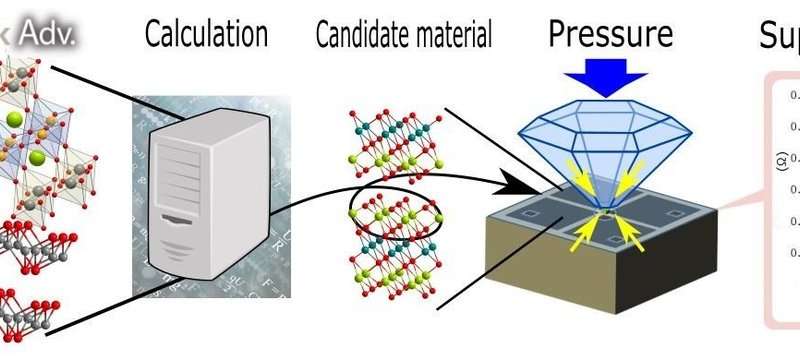
A NIMS-Ehime University joint research team succeeded in discovering new materials that exhibit superconductivity under high pressure using materials informatics (MI) approaches (data science-based material search techniques). This study experimentally demonstrated that MI enables efficient exploration of new superconducting materials. MI approaches may be applicable to the development of various functional materials, including superconductors.
Superconducting materials that enable long-distance electricity transmission without energy loss in the absence of electrical resistance are considered to be a key technology in solving environmental and energy issues. The conventional approach by researchers searching for new superconducting materials or other materials has been to rely on published information on material properties, such as crystalline structures and valence numbers, and their own experience and intuition. However, this approach is time-consuming, costly and very difficult because it requires extensive and exhaustive synthesis of related materials. As such, demand has been high for the development of new methods enabling more efficient exploration of new materials with desirable properties.
This joint research team took advantage of the AtomWork database, which contains more than 100,000 pieces of data on inorganic crystal structures. The team first selected approximately 1,500 candidate material groups whose electronic states could be determined through calculation. The team then narrowed this list to 27 materials with desirable superconducting properties by actually performing electronic state calculations. From these 27, two materials SnBi2Se4 and PbBi2Te4 were ultimately chosen because they were relatively easy to synthesize.
The team synthesized these two materials and confirmed that they exhibit superconductivity under high pressures using an electrical resistivity measuring device. The team also found that the superconducting transition temperatures of these materials increase with increasing pressure. This data science-based approach, which is completely different from the conventional approaches, enabled identification and efficient and precise development of superconducting materials.
Experiments revealed that these newly discovered materials may have superb thermoelectric properties in addition to superconductivity. The method we developed may be applicable to the development of various functional materials, including superconductors. In future studies, we hope to discover innovative functional materials, such as room-temperature superconducting materials, by including a wider range of materials in our studies and increasing the accuracy of the parameters relevant to desirable properties.
